Turning grey to silver – early season salmon
Issue 9 (March-May 2016) Jason Nash
Looking down river on a bleak spring day, with dark, low lying clouds and skeleton-like trees lurking above you, the water beneath looks empty and devoid of life. Peer a little closer and quite the opposite is true. The fast flowing river and its salmon are currently in a state of transition; eggs tucked away under inches of gravel are developing into alevins as their spindly, meagre parents, worn from their travels and combat, peregrinate their way back to sea for a much needed and deserved meal. In turn, out in the rough waters of the Atlantic, exuberant, sparkling spring salmon are homing in on their natal river using the earth’s magnetic field, the river’s unique chemical smell and pheromones released by resident fish, to spawn the next generation of salmon.
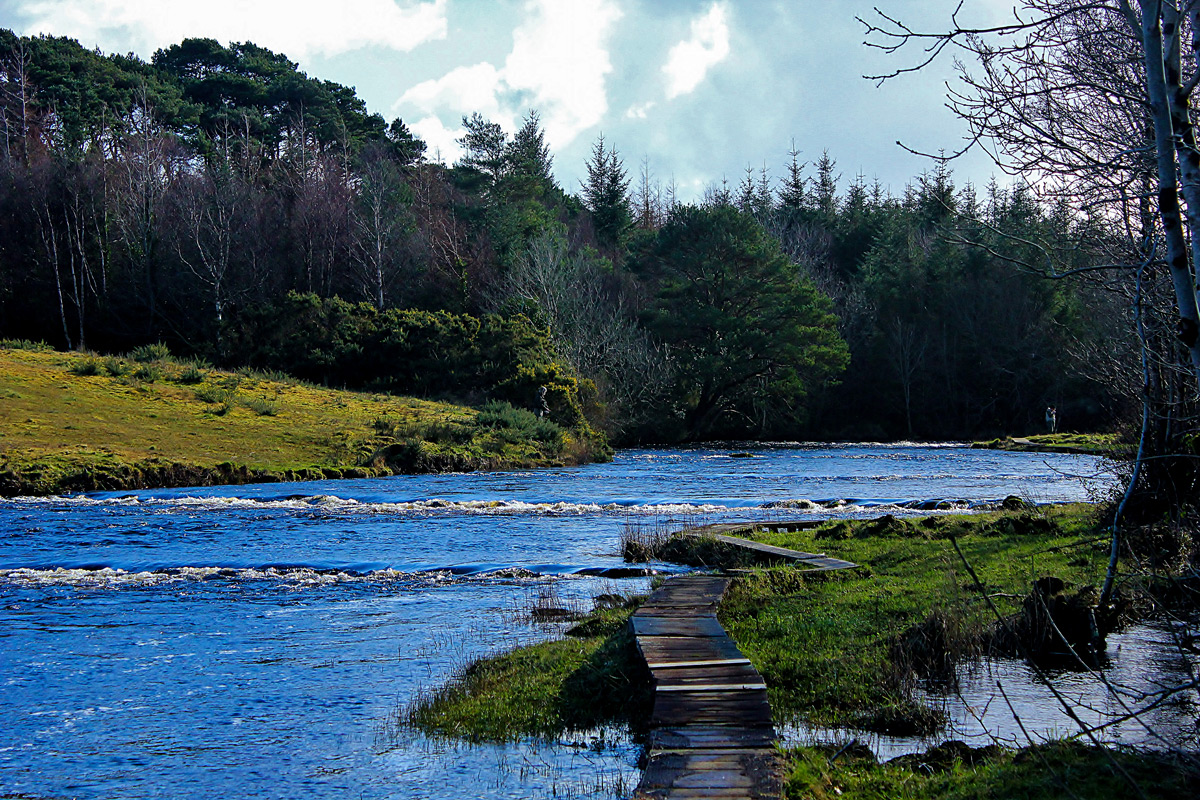
For the game angler, it’s time to dust down the rods and get the gear ready for the new season ahead. It’s been a long winter, with many pondering how trout and salmon redds have fared during the winter floods. Quantifying the damage incurred is difficult to say the least, but all is not lost. 2015 in general was a very wet year, in comparison to the previous two. Salmon and trout had easy access to the spawning grounds for much of it and my observations on the Bandon showed there was very little spawning on the lower catchment. This is positive as the hydraulic power of water lower down a river is much greater than that experienced upstream. Studies conducted by the Spey Fisheries Board in Scotland portray the flexible growth strategy of juvenile salmon parr. Smolt production following a large spate(s) is reduced. However, year classes of surviving fish grow much quicker and exhibit higher survival rates due to less competition, mitigating to a large extent the loss of smolt production by the second year following a spate event.
Fishing in spring is a cold affair. High water dominates, with low water temperatures governing the early months, up until April at least. Summer tactics are a thing of the past and will not yield many positive results at the start of the year. Spring salmon are a sight to behold, creatures of beauty and epitomise what salmon are all about. Having spent at least two winters at sea feeding, they are pristine and much coveted by fishermen. To have the chance of latching onto one of these special creatures, the right techniques must be engaged. For me, fly fishing and spinning are the only two methods I would consider using on a quest for an early springer. Prawn/ shrimp fishing is something I have tried in the past and rarely do now. Worms, whilst useful and a great bait, have no place in spring fishing for me. Too many kelts (previously spawned salmon) are migrating back to sea and trout at this time of year are ravenous. If I chose to fish the worm my chances of hooking one of these would be far greater and it is not what I intend to do. If the water was low and I spotted a definite spring fish resting in a pool then an allowance would be made (with a quick strike once a take is felt) but otherwise the worms can wait until later on in the year.
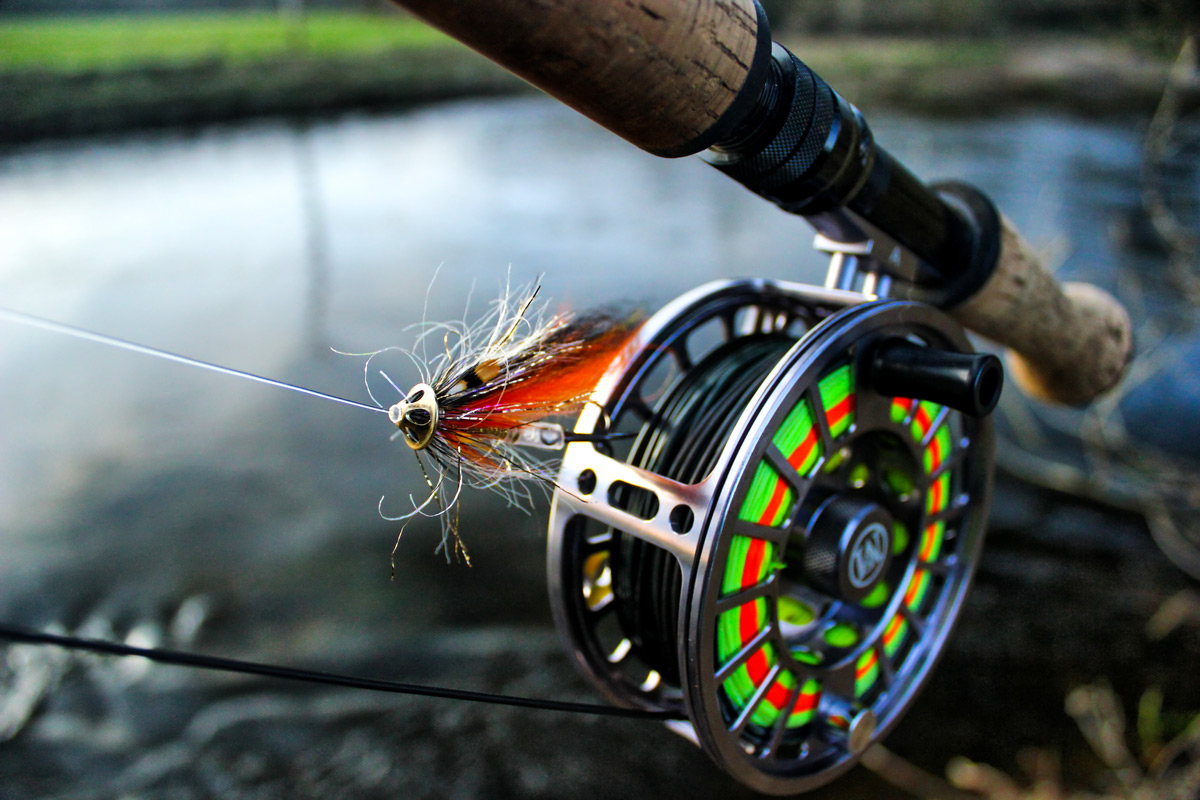
Firstly, I will cover fly fishing. As mentioned already, summer techniques are based around moderate flows and average to high water temperatures. To expect spring salmon to react the same way as summer salmon to the same methods of presentation is a mistake. Water temperature is a limiting factor to a salmon’s movement. In the early spring, you can expect temperatures to be generally between five and eight degrees celsius. Lethargic spring salmon hold station low in the water column, using their pectoral fins as hydrofoils to hug the boundary layer where the speed of water isn’t as fast as it is on the surface. Remember, these creatures don’t feed and won’t spawn until the end of the year so conserving their energy is a survival strategy. When temperatures are around four degrees and lower, a salmon’s swimming speed is diminished, which is why fishing below weirs and rapids is so successful at the start of the year. If fish begin to build up, do try and have a cast in this hotspot if you get the opportunity.
“For working specifically in the niche of extreme spring fishing in tight spaces where very high, coloured, cold water dominates, the Skagit head is the best choice”
Along with low water temperatures, water level more often than not is also quite high and the speed quite fast. To transport our fly, sink it down to the salmon’s nose and let it swing around in the current as slow as possible, we must adapt our technique appropriately. Two designs of fly line come to mind for sinking line work; Skagit and Scandi. Each of these are attached to a running line which in turn is connected to our backing line. Skagit heads float and are designed to fish very fast sinking tips with heavy flies, whereas Scandi heads are designed to fish versi-leaders at depth with smaller flies. For working specifically in the niche of extreme spring fishing in tight spaces where very high, coloured, cold water dominates, the Skagit head is the best choice. Nevertheless, Scandi heads offer finesse and if you’re equipped with sinking Scandi heads and versi-leaders than 99% of situations, in Ireland at least, can be covered. For spring work on the Bandon, the RIO AFS does the business and gets the fly to the desired depth in its relatively shallow, gravelly pools. With sinking rates of up to 3-4 inches per second provided and attached versi-leaders sinking as fast as 7 inches per second, it gets the job done.
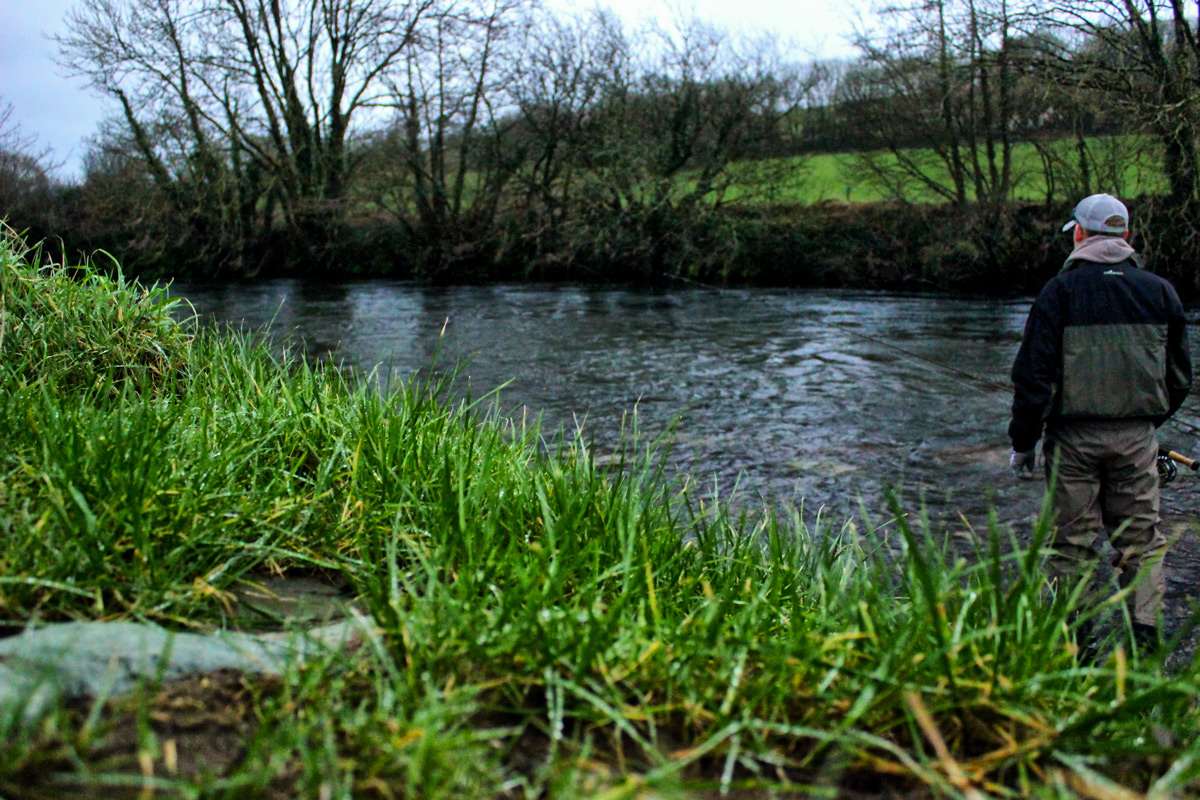
Casting these lines needs work and precision. A single Spey cast after the fly swings into your bank will not suffice as the line has sunk too deep. First of all it is necessary to retrieve the head of the fly line up to the tip of the rod (or more if needed depending on sink rate and head length) and then use a roll cast to roll the line up to the surface. This may need to be done twice if the fly is well sunk and should be made so the lines position remains on the dangle. Once it has been rolled to the surface, a snap-T cast or snake roll (depending on which bank you are on) can be made followed by the forward cast to shoot your line and fly across the river. These movements need to be quick and deliberate; otherwise the line will sink, making it impossible to cast properly. Once the line touches down, it may not be enough to leave the line do the work. If the water is particularly deep or fast, a quick upstream mend should be made to help the line sink quicker into the strike zone and fish the fly around slower. Sometimes it is also no harm to release a short length of slack line.
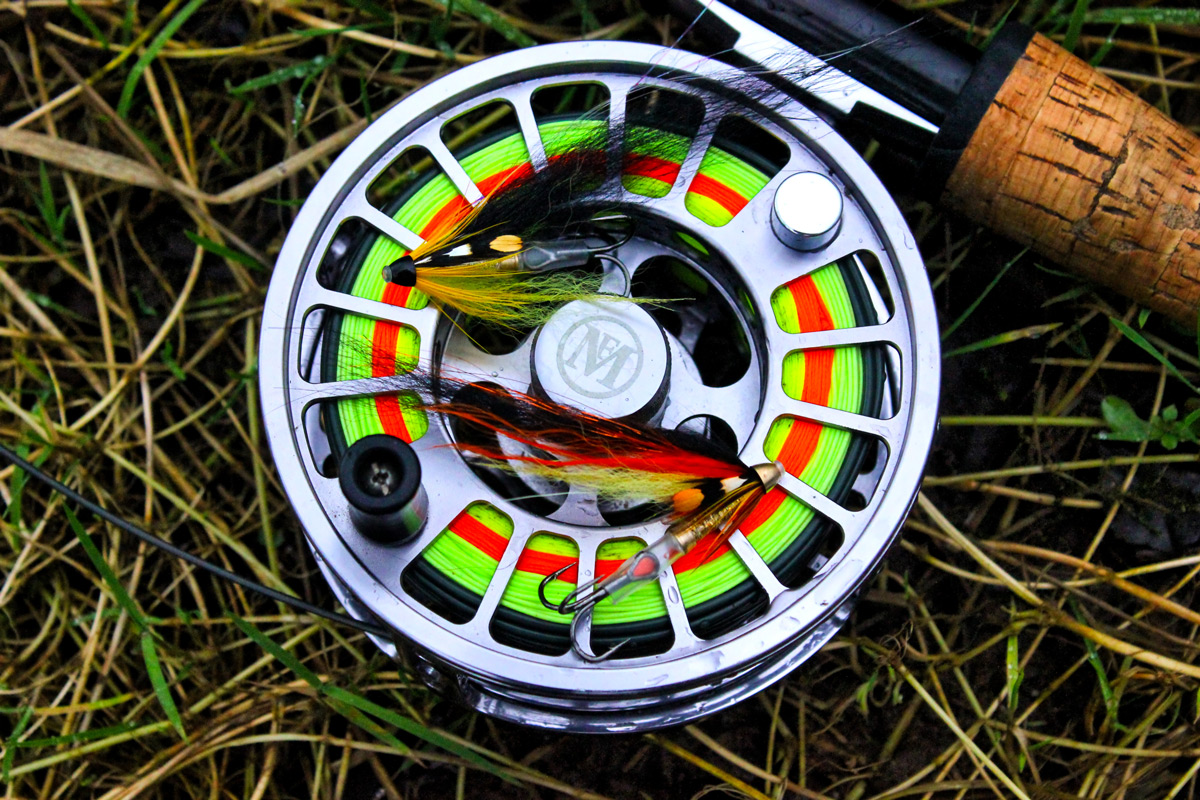
As for flies, the general rule is the higher and colder the water, the bigger the fly. A big fly is classified as anything around 3-4 inches in overall length. Tied on plastic, aluminium, copper or brass tubes, every situation will be covered. Patterns should be limited to proven fish catchers as opportunities to cover early running spring salmon are limited. Due to the weight of the flies and the desire to fish at depth, short leaders are necessary. If you have too long a leader, the fly will be nearer the water’s surface and will negate the purpose of the sinking fly line. A leader of 3-4 feet, comprising 20-30lb breaking strain fluorocarbon, is perfect. If the river level drops and the clarity is gin clear, reduce your sinking line rate, size of fly and lengthen your leader, tapering it with lighter fluorocarbon.
The fact of the matter is, fishing flies won’t cover every conceivable situation. Many pools, on smaller rivers especially, have areas which cannot be reached with a fly. Quite often river height and clarity early on in the year are unsuitable for effective fly fishing so spinning tactics may be employed. As much as one likes to limit one’s self to the fly, to do so deprives you of the opportunity to cover fish at a time when they are scarce enough. For this reason, more often than not, I carry a spinning rod with me at this time of the year. There is much more to this method than mere chuck and chance. The same golden rule for fly fishing applies to spinning; depth. Even though you have a 20 gram spinner attached, if you cast it and simply retrieve than you will not reach the required depth. To do so, you must let your lure sink, cast upstream or both. Combing a pool when in flood, think of the depth and the structure which you observed during the low summer months in your mind’s eye. Let the spinner sink where needed and retrieve slowly. If you’re not bumping the bottom than you probably aren’t fishing deep enough and although you may lose some lures, when a salmon strikes the losses are quickly forgotten. Use your rod to impart life in your lure in areas where the water isn’t too fast or when the spinner is downstream of you. Pausing or slowing down your retrieve and jerking the tip of the rod breaks up a monotonous straight retrieve and the fluttering of the spinner can induce a take. As a bonus, using your rod like this means you are winding up more slack line which as a consequence, takes pressure off you reel and back!
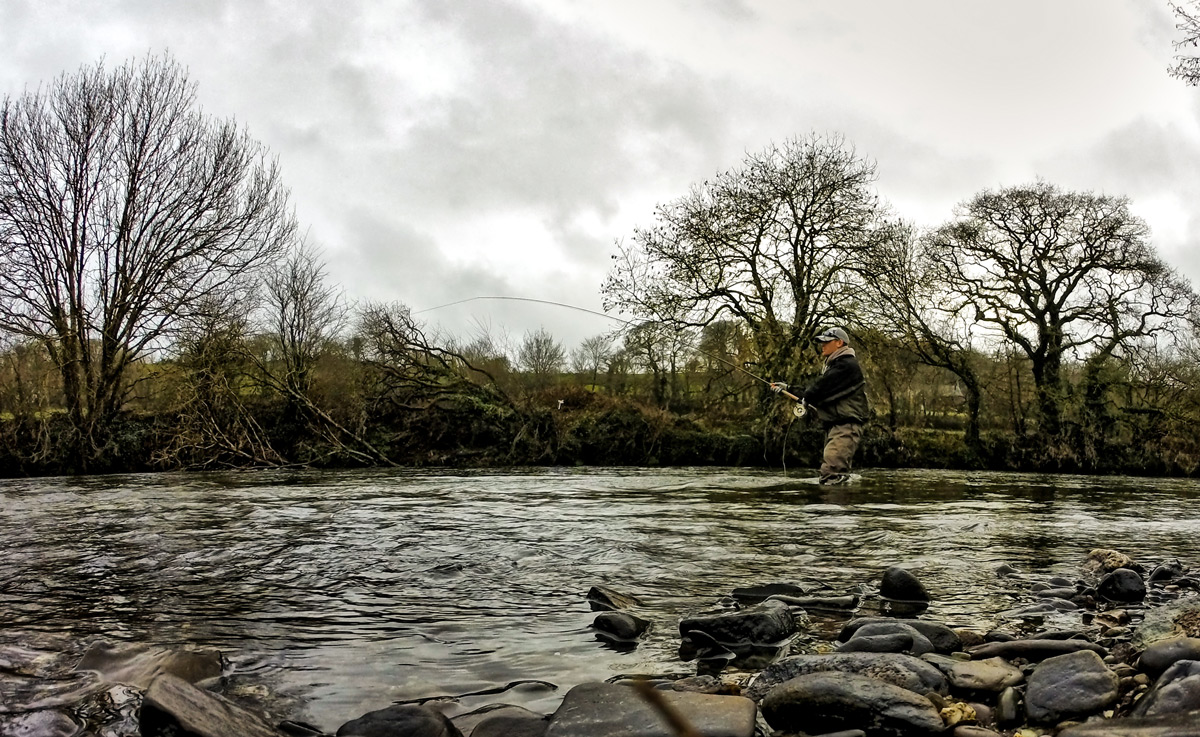
For spinning, a 9 or 10 foot rod, rated for 10-40 gram casting weight, is perfect. A rod of this length gives you the power to play a strong spring salmon and fish heavy spinners in high water. Anything much longer is too soft and will put unnecessary stress on your reel. With regards to the reel, buy quality and strength. Cheap, small reels will not see the summer if regularly used for spinning in high water. I have a Shimano Spheros, in the 6000 size. Designed for saltwater use, features such as X-SHIELD and X-SHIP offer gear durability and protection against water intrusion. Its size and gear ratio mean I can retrieve the spinner as slow as I want without putting stress on the reel, thus increasing its longevity. Load the spool with strong monofilament of 15 to 20lb breaking strain and attach a swivel 3 feet above the spinner to eliminate the risk of knots and tangles.
“If you’re not bumping the bottom than you probably aren’t fishing deep enough and although you may lose some lures, when a salmon strikes the losses are quickly forgotten”
As for spinners, the ever reliable Flying C has enticed countless salmon over the years. For spring work in high water I only ever use 20 gram (Size 4) lures as anything lighter doesn’t gain the required depth. Casting with these is easy and loads of water can be covered quickly and efficiently. Two colours dominate the early season; yellow and black. As mentioned already, these colours command the colour scheme for attracting spring salmon. Although there are exceptions, during brighter days the yellow excels, whilst on duller days the black comes into its own. In coloured water, salmon find a copper blade more appealing and in clear water the silver blade takes over. Using a clip to change lures is extremely useful as I often find myself chopping and changing during the course of a day. Time and again this versatility has paid off when fishing with friends who may stick to their initial choice throughout the day!
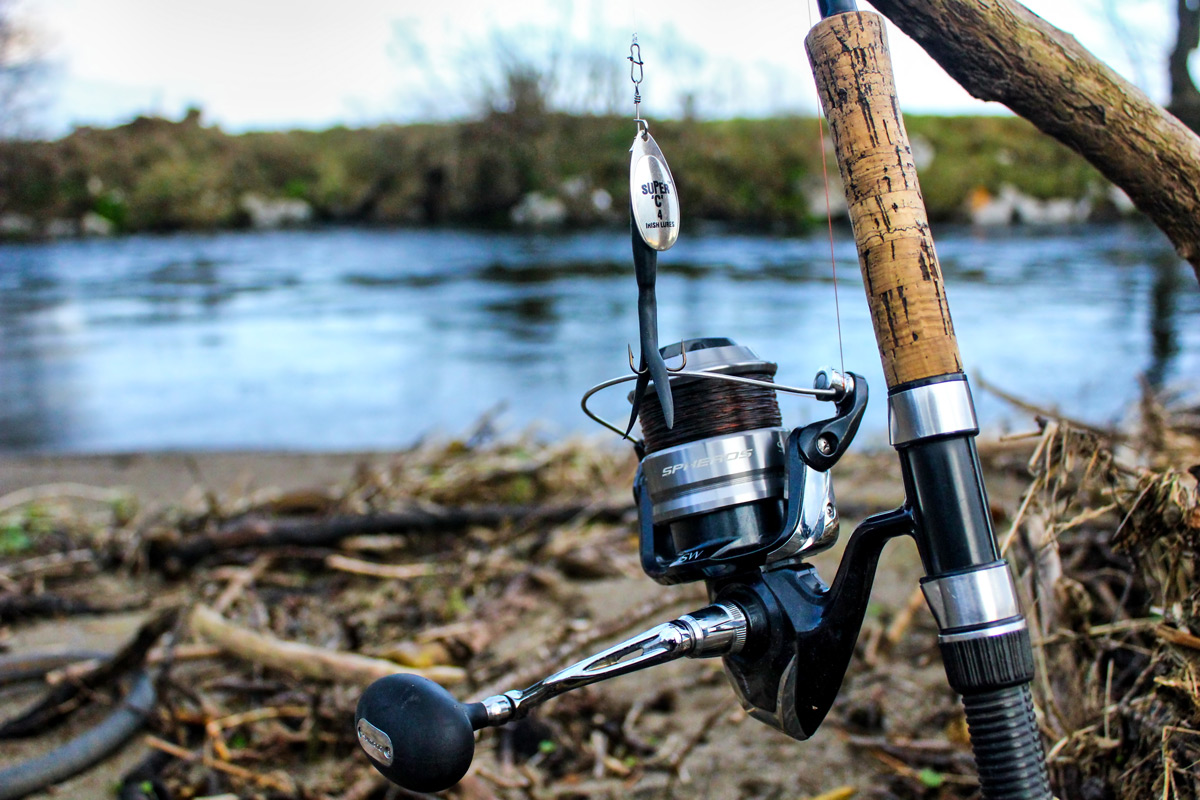
Being in the right place at the right time goes a long way in salmon fishing and none more so than in the spring time. The first salmon entering a river are programmed to run to the upper part of the system and will travel the furthest of all. The upper and middle sections of river are where most efforts should be concentrated as this is where the majority of fish intend to stop, take a breather and rest. Only a handful of Irish rivers receive a sustained run of these magnificent early fish and most of them tend to be lake fed, such as the Caragh in Kerry and Drowes in Donegal. On these rivers and elsewhere, determination and patience is needed. Adapt to the salmon, think about where they may be in any given condition of water and an elusive, fresh, silver reward will eventually transpire.
Jason Nash

